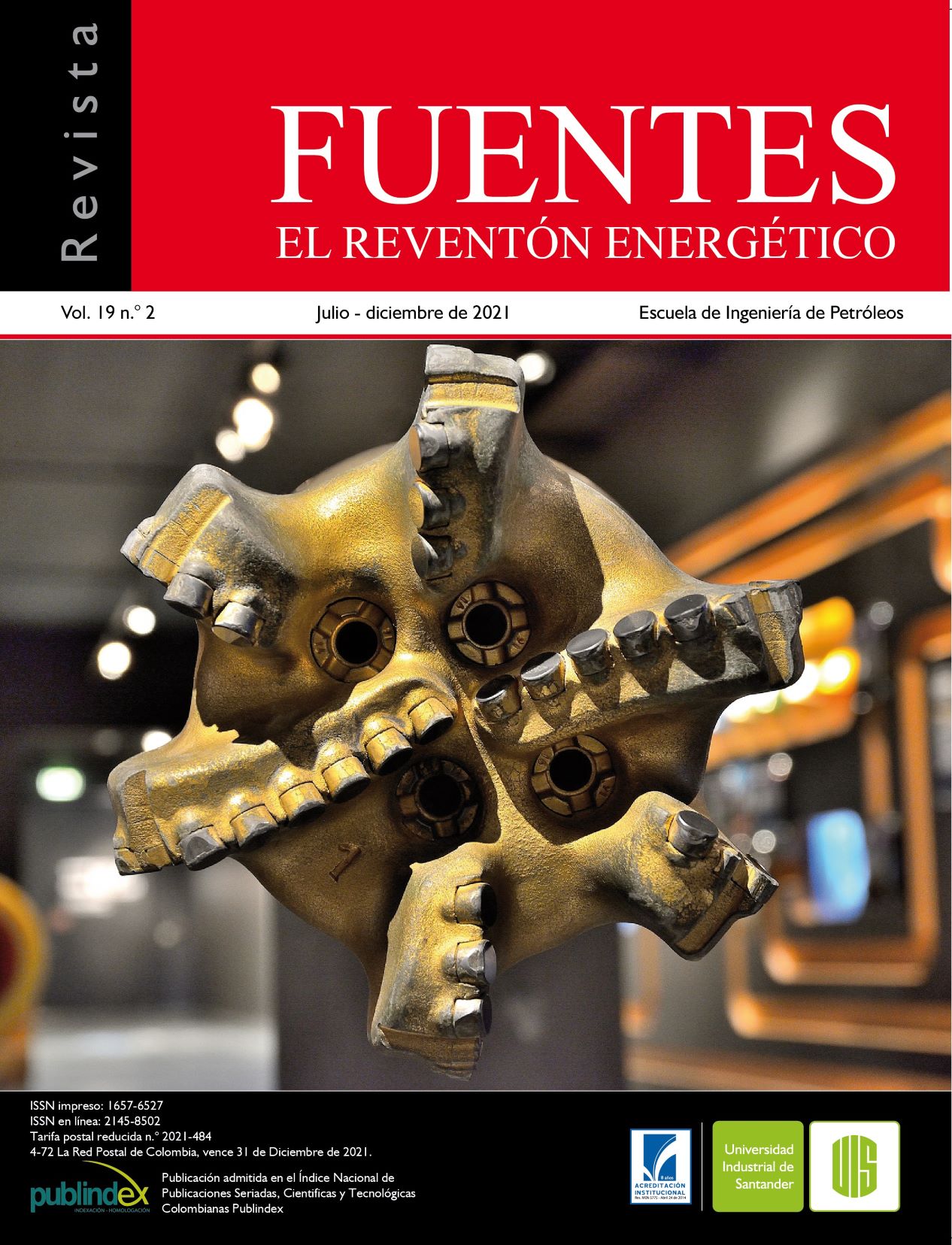Analysis of alternatives for the selection of offshore production platforms. Application in the Colombian Caribbean
Published 2021-12-06
Keywords
- Platforms,
- offshore,
- Hydrocarbon production,
- Metaoceanic conditions,
- Deep waters
How to Cite
Copyright (c) 2021 Universidad Industrial de Santander

This work is licensed under a Creative Commons Attribution 4.0 International License.
Abstract
The development of this article consists of the application of an analysis sequence which consists of four criteria that can be taken into account when developing an offshore oil field. First, a detailed study is made of the different types of platforms that can be used for the production of hydrocarbons in deep and ultra-deep waters, then the selection criteria for each type of platform are developed depending on factors such as the characteristics of the reservoir, the technical requirements and the meta-oceanic conditions of the site, subsequently it seeks to identify the basic facilities that the offshore facilities must have and a series of scenarios are proposed for the production of the fields taking as a reference the experiences of the Liwan field -1 located in deep waters of the South China Sea.
The application of a scenario for the development of the Orca field is suggested, taking into account the needs of infrastructure, production systems and facilities. In addition, the variables influenced by the meta-oceanic conditions of the area are analyzed; in order to thus analyze all the variables that can drive the selection of a production platform in the northernmost seas of the country, specifically in the waters of the Colombian Caribbean Sea.
Downloads
References
- Cadena, M. Caracterización océano-atmosférica de las áreas marinas de Colombia. (2019). Recuperado de: IDEAM
- Chakrabarti, S. K. (2005). Handbook of Offshore Engineering. Plainfield, Illinois, USA: Elsevier.
- Devis et al. (2017). Assessment of extreme wind and waves in the Colombian Caribbea Sea for offshore applications. Medellín, Colombia: Elservier.
- Distribución espacio-temporal de vientos en superficie. (2018). Recuperado de: IDEAM
- Feng et al. (2013). Study on Development Scenarios of Gas Fields around the Continental Slope of South China Sea. Recuperado de: https://www.onepetro.org/conference-paper/OTC-24055-MS
- Guevara, J. F. (2018). Identificación de facilidades básicas de superficie para la producción de gas en yacimientos costa afuera (offshore) ubicados en aguas profundas. (Trabajo de grado, Universidad Industrial de Santander). Recuperado de: Base de Datos Universidad Industrial de Santander
- Instituto de hidrología, meteorología y estudios ambientales servicio mareográfico pronóstico de pleamares y baja mares en la costa caribe colombiana. (2020). Recuperado: IDEAM
- Landón, F, J. & Rodríguez, L. G. (2010). Sistemas Submarinos de Producción. (Trabajo de grado, Instituto Politécnico Nacional). Recuperado de: https://tesis.ipn.mx/jspui/bitstream/123456789/16967/1/Sistemas%20submarinos%20de%20producci%C3%B3n.pdf
- Mayorga, K. A. & Rojas, H. (2018). Metodología para la Selección de Equipos de Perforación Offshore en Bloques frente a las Costas de los Departamentos de Bolívar, Atlántico y Magdalena en el Caribe Colombiano. (Trabajo de grado, Universidad Industrial de Santander). Recuperado de http://tangara.uis.edu.co/biblioweb/tesis/2018/173536.pdf
- Ortiz, A.D. & Mora, A.F. (2019). Impacto de la temperatura en el comportamiento mecánico de las rocas, usando modelos constitutivos. Aplicación offshore. (Trabajo de grado). Recuperado de http://tangara.uis.edu.co/biblioweb/tesis/2019/177131.pdf
- Pérez, N. (2004), Apuntes del curso ingeniería civil costa afuera, capítulo ii. Previsión y desarrollo de plataformas de acero para apoyar la explotación petrolera en aguas hasta 200 m. (Facultad de ingeniería, UNAM, México D. F.).
- Rodríguez, M. A. (2009). Criterios de Selección de Sistemas Flotantes de Producción para el Desarrollo de Campos Petroleros en Aguas Profundas. (Trabajo de grado). Recuperado de https://es.scribd.com/document/389455069/237048972-2-1-Propiedades-de-Las-Tuberias
- Zhang et al. (2013). Floating Production Platforms and their Applications in the Development of Oil and Gas Fields in the South China Sea. Revista Journal of Marine Science and Application, 13, 67-75.
